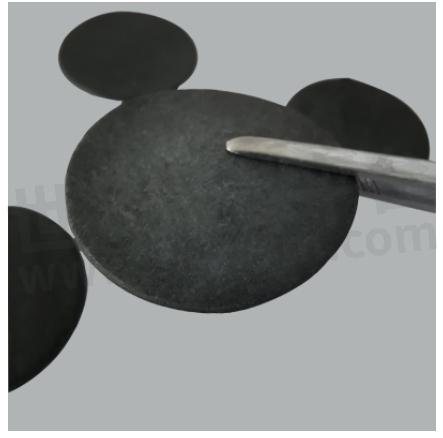A Brief Description of Thermally Conductive Materials - Carbon Fiber Thermal Pads

The popularization and research of 5G communication technology enables people to feel the experience of high-speed surfing in the network world, and also promotes the development of some 5G-related industries, such as unmanned driving, VR/AR, cloud computing, etc., 5G communication technology In addition to bringing people a pleasant network experience, it also has the problem of heat dissipation that needs to be solved.
Most of the heat source in the equipment is its power consumption electronic components, so the higher the power of the electronic components, the greater the heat it will generate, and applications such as 5G mobile phones and 5G communication base stations heat is much greater than the previous generation of products, so the heat dissipation of the device affects its reliability.

Fig.1
Why are thermally conductive materials used in addition to heat dissipation devices? The main reason is that the heat dissipation device and the surface of the heat source are not completely bonded, and there is still a large amount of uncontacted area, so the heat will be affected by the air when it is conducted between the two, and the conduction rate will be reduced, so it will be filled with a heat-conducting material. Between the heat dissipation device and the heat source, remove the air in the gap and fill the pits in the gap, thereby reducing the contact thermal resistance between the two.
Carbon fiber thermal pad is a thermal pad made of carbon fiber silica gel. It acts between the power device and the radiator. By filling the gap between the two, the air is removed, so that the heat from the heat source can be accelerated to the heat sink. device, so as to ensure the service life and performance of the body. Since this product uses carbon fiber as raw material, its thermal conductivity can exceed that of copper, and it has good mechanical properties, electrical conductivity, and excellent thermal conductivity and radiation cooling capabilities.
For some equipment or electronic products with high heat dissipation requirements today, carbon fiber thermal pads with high thermal conductivity are used to effectively protect the normal operation of the equipment and improve its reliability.
- +1 Like
- Add to Favorites
Recommend
- Why Do Carbon Fiber Thermal Pads Become The Newest in Thermal Interface Materials?
- Advantages of Carbon Fiber Thermal Pads over Silicone Thermal Pads
- Thermal Grizzly CPU Contact Frame Intel 1700 LT is Now Available
- Nippon Chemi-Con and Asahi Carbon Collaborated on Developing Novel Conductive Carbon “NH Carbon™” for Lithium-Ion Batteries
- Thermal Grizzly Product Update: AM5 High-Performance Heatspreader with New Nickel Plating
- Important Note: Extension of Compatibility for AMD Products for the Ryzen 9000 Launch
- Waermtimo, a New Composite Cooling Material Supplier, Anounced a Distribution with Sekorm to Enrich Carbon Fiber Thermal Conductive Materials and More
- New products: Heatspreader & Mycro Direct Die for Intel CPUs
This document is provided by Sekorm Platform for VIP exclusive service. The copyright is owned by Sekorm. Without authorization, any medias, websites or individual are not allowed to reprint. When authorizing the reprint, the link of www.sekorm.com must be indicated.





























































































































































































































































































































































































































































































































































































































































































































































































































































































